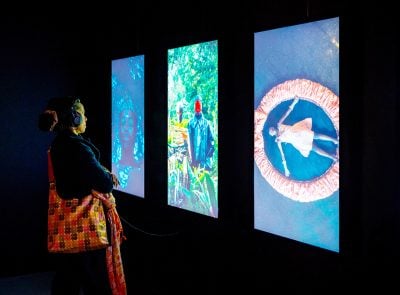2011 saw dramatic price fluctuations reflecting economic uncertainties in the major consuming countries but Africa, as an increasingly important supplier to the industrialised world, came up trumps. Billion-dollar deals with some of the biggest global players were concluded and considerably more investment has been making its way to the continent, now considered a highly desirable investment destination. The fortunes of some of Africa’s smaller nations, such as Guinea and Sierra Leone, will undergo radical change for the better as some of the most ambitious mining projects in the world begin to take off. In this Special Report we reflect on the major developments in 2011 and anticipate the situation for this year. Report written by M J Morgan.
Whereas in 2010, prices surged once they had picked themselves off the floor the financial crisis had dumped them on, 2011 was not so easy. Prices muddled through for the first half of the year, but by year-end copper, aluminium and iron ore were all around 20% lower than where they had started.
Gold started the year at $1,400/oz, and rose as high as $1,900 in August as panicking investors sought a safe haven from tumbling asset values as fears about a Eurozone meltdown spiked. It ended the year at above $1,600/oz, benefiting African producers such as South Africa, Ghana, Mali and Tanzania.
Crucially, prices in general remained at or above pre-crisis levels which, depending on your opinion, reflects the ongoing commodities supercycle (as previously discussed in African Business) or reflects the cold rational reality of a rapidly globalising and populating world dominated by Asia or maybe, simply, in the language of the saintly Alan Greenspan, “irrational exuberance”.
Whilst 2010 was a phenomenal year for prices, 2011 was a phenomenal year for deals. The first half of the year alone saw 1,379 deals worth $71bn conducted, 25% higher than the same period the previous year. The value of the average deal was the highest since 2006. In the first half of the year alone, Africa was the scene for $12.9bn worth of mining mergers and acquisitions.
The 40 largest miners, having capitalised on soaring prices since the financial crisis, took the opportunity to buy back shares and raise dividends. More significantly still, they collectively scheduled $120bn in capital expenditure for 2011, more than twice that of 2010. The degree of attractiveness of Africa to mining investors has perhaps never been so great, as witnessed by the enormous scale of investments being made across the continent, and it seems we can expect to see a continuance of the upward trend in its share of global mining investments.
April saw the beginning of a bidding war that led to the second biggest takeover of the year. China’s Minmetals Resources bid C$6.3bn ($6.2bn) for Australia’s Equinox Minerals, which has substantial assets in Zambia, including the Lumwana copper mine which produces some 145,000t per year. Barrick Gold triumphed when they trumped this offer with their own C$7.3bn ($7.2bn) bid.
Minmetals’ bid was the biggest Chinese mining takeover ever attempted and represented a premium of one third over the 20-day trading average prior to its announcement. Minmetals declined to raise their bid, with chief executive officer Andrew Michelmore saying: “The price offered by Barrick is above our most optimistic assessment of value.” Worldwide, Chinese companies acquired 75 mining businesses at a cost of $4.7bn. Equinox accepted Barrick’s bid, making the deal the most expensive copper takeover ever at 13.5 times earnings. The Lumwana mine is the biggest capital project in Zambia and is expected to have a lifespan of 37 years. The takeover, at such a premium, suggests both that Barrick wants to diversify away from gold and how bullish it feels about copper prices. Copper can be seen as a natural hedge for gold producers.
Trading and mining giant Glencore raised $10bn when it floated in May in London and Hong Kong, valuing the company at $60bn. The company has extensive interests in the Democratic Republic of Congo (DRC) and Zambia. It controls around half of the world’s freely traded copper market (i.e. excluding sales by integrated producers and direct sales to industrial consumers).
Dodd-Frank Act becomes law
In July, the Dodd-Frank Act was passed into law. In addition to the implementation of new financial regulations, the Act contains provisions relating to the disclosure of mineral traceability. The aim is to introduce a stricter regime for the prevention of the sale of conflict minerals than that of, for example, the voluntary Kimberley Process, which followed in the wake of concerns about African diamonds funding conflict.
In September, Liberia shipped its first iron ore exports since the civil war. AcelorMittal reached a $1bn agreement with the country back in 2005, a figure subsequently renegotiated up to $1.5bn. The company had to construct a 250km railway from mine to port. The country had been one of the five largest iron-ore exporters before the war.
According to company founder Lakshmi Mittal, who attended a ceremony to mark the occasion, investors have ploughed $16bn into the country in the last five years. His company shipped around 1.2-1.3mt in 2011, rising to 4mt in 2012 – with an even greater capacity in the years to come. Indian miner Vedanta also invested in Liberia in 2011, buying a 51% in a local firm for $90m.
The pursuit of iron ore and coal projects, motivated by the rapidly escalating demand for steel in the rapidly growing Asian nations, especially China, has led to a number of moves by the biggest players.
Rio Tinto and Vale, who are developing separate parts of the vast Simandou iron ore project in Guinea, announced plans to invest a combined $1.8bn into this deposit alone. As recently reported in African Business, the country is seeing billions in investment flows pouring in as the West African iron ore renaissance gathers momentum.
The takeover of African coal miner Riversdale by Rio Tinto, following a bid the previous December, was successfully concluded in April. Rio paid $2bn for a 50% interest in the firm; by June it owned more than 99% of the company. Riversdale has substantial coking coal assets in Benga, Mozambique.
Brazilian iron ore giant Vale owns the majority stake in the neighbouring Moatize coal project. The exceptional deposits there as well as their ready proximity to markets in China and India have led to a boom there.
Last year saw the introduction of new mining codes in Guinea and Angola. Guinea’s new code, which came into effect in September, granted the state an automatic 15% stake with the right to purchase an additional 20%. The new codes are both designed to improve transparency and lead to an increase first in exploration and then investment in extraction.
Ghana, Nigeria and South Africa have also been revising their mining codes and tax regimes. Zambia enjoyed the faster growth rate in the sector, 15.7% whilst in Namibia the sector shrank by 45%.
On the whole, the year was a positive one for Africa as investors’ appetite for Africa projects grew and resilient, if volatile, prices remained well above cash costs – allowing production to continue to expand.
Want to continue reading? Subscribe today.
You've read all your free articles for this month! Subscribe now to enjoy full access to our content.
Digital Monthly
£8.00 / month
Receive full unlimited access to our articles, opinions, podcasts and more.
Digital Yearly
£70.00 / year
Our best value offer - save £26 and gain access to all of our digital content for an entire year!
 Sign in with Google
Sign in with Google 


